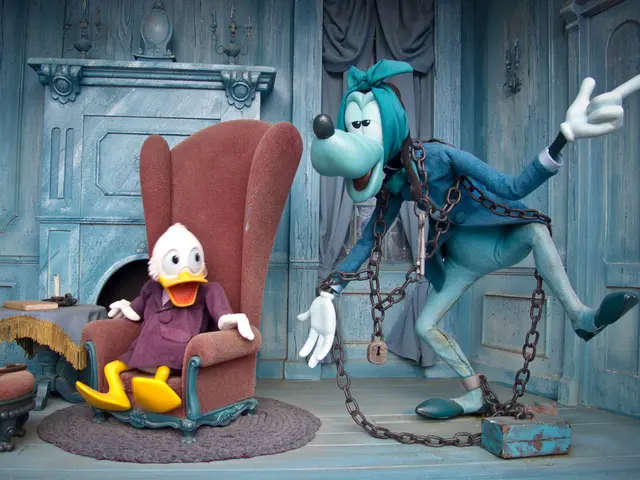Unmasking the Wardrobe: Analyzing the Costumes in 'The Sympathizer', Insights from Costume Designer, Danny Glicker
The Sympathizer's Costume Design: An In-Depth Look with Danny Glicker
Spencer Williams delves into an enlightening conversation with esteemed costume designer Danny Glicker, discussing the intricate process behind the creation of the captivating costumes for The Sympathizer. Glicker offers valuable insights into his thoughtful approach to developing the diverse and multifaceted characters, delving into the meticulous research and creative decisions that brought each role to life. From the enigmatic CIA agent Claude to the glamorous transformation of Lana, Glicker's insights provide a fascinating glimpse into the artistry and dedication involved in crafting the visual essence of this acclaimed series.
Spencer Williams: I am delighted to speak with my friend, costume designer Danny Glicker, today. Welcome, Danny.
Danny Glicker: Thank you, Spencer. I'm thrilled to be here.
Spencer Williams: Let's dive right in. The Sympathizer is based on a novel of the same name by Viet Thanh Nguyen. What was your familiarity with the book, and did it play a role in your design process?
Danny Glicker: The book served as the foundation of my process. It's a Pulitzer Prize-winning novel, and I immersed myself in it thoroughly. The novel's subject matter is complicated, and its handling is nuanced, making it essential for me to grasp the nuances to visualize the story effectively.
To study the book's intricacies, I first experienced the story fresh, then removed any descriptive quotes about the physical world, character descriptions, political events, or physical events. I created a comprehensive document consisting of all the quotes related to costumes or fashion. Ironically, it resembled the Captain's code, providing a vital visual touchstone for me in aligning my research and character arcs.
Spencer Williams: That's fascinating. Working with the show's creator and director, Park Chan-wook, must have been rewarding. What was your collaboration like, especially since you worked with a translator?
Danny Glicker: Collaborating with Park Chan-wook was a dream. He is one of the greatest directors of our time and one of the most renowned visual storytellers alive. Although our conversational language differed, I understood our collaboration would be focused on visuals, so I prepared stunning images and detailed documents for our conversations. The translators accurately conveyed my intent, including nuances and subtext, and our conversations were thoroughly satisfying. I cherished working with him.
Spencer Williams: Collaboration clearly paid off, resulting in a visually compelling series. The costumes in each episode were consistently impressive. The Sympathizer is set in the mid-1970s, beginning after the fall of Saigon. How did you approach researching this time period and cultural context?
Danny Glicker: Research was extensive, spanning a broad range of subjects. To ensure a shared vision among my large department, I deluged our workspaces with tons of research. Once I refined my research and shared it with Director Park, I meticulously covered every flat surface, from floor to ceiling, with the resulting research. This method enabled my team to easily access the information and become familiar with the visual world of the series.
One of the more challenging aspects was researching the Southern Vietnamese military and police uniforms, as many were destroyed after the fall of Saigon. In the 1970s, there was a shift in uniforms for functional reasons. For example, a popular white shirt some police wore was changed to gray based on a declassified CIA report recommendation. We conducted extensive research and recreated these uniforms to preserve the authenticity of street life in Saigon.
Spencer Williams: Your dedication to authenticating historical settings is evident. How did you convey the transition from Vietnam to Southern California for the refugee characters?
Danny Glicker: The transition was significant, as many characters lost everything when they came to the United States. I wanted to show that the characters had exquisite tastes, even though they initially wore clothes provided by church groups or refugee assistance centers. The characters maintained their style to reflect their roots while adjusting to their new home.
As the series progressed, Madame became discontent with her second-class life in the United States. She motivated the General to move forward, allowing us to witness her transition from fashionable in Saigon to wearing more understated clothes upon arrival. Quickly pulling herself together, Madame became super fashionable with chic pantsuits, matching purses, and shoes, while Southern California was bathed in cool tones to represent the characters' initial cool reception in contrast to their expectations of a warm, glamorous Gold Coast.
Spencer Williams: Throughout the series, the Captain's costumes were remarkable. They seamlessly reflected his academic background and dual role as a plant embedded in South Vietnam's government. How would you describe the Captain's costumes, and how did they contribute to his storyline?
Danny Glicker: The Captain's costumes were heavily inspired by academic silhouettes, particularly from the "Take Ivy" style. These clean-cut silhouettes served a dual purpose: they represented his formal education in the United States, providing him an air of traditional collegiate preppiness, while making him virtually invisible. His wardrobe allowed him to blend in and access various places without arousing suspicion.
The Captain had a romantic air about him, inspiring a nostalgic feeling in others. His outfits were a mix of 1960s styles with splashes of 1970s fashion, reflecting hand-me-downs from his college professor sponsor. We stylized his color story to align with Director Park's vision using a more saturated and stronger aesthetic. The blue he often wore represented American neutrality, contrasting with the colors of Vietnam.
The Sympathizer is now streaming on Max.
- Spencer Williams: As we delve into the artistry behind The Sympathizer, it's important to highlight that the series is not just an entertaining narrative, but a thorough exploration of costume design, which has captivated audiences on Max.
- Danny Glicker, reflecting on his craft, признавав, що костюми є важливою складовою в захоплюючих фільмах, де їм часто протиставляються інші елементи розваги. Glicker працював над створенням костюмів, яке було не лише акуратним і технічним, але и творінням він дав своїм персонажам власні та унікальні іміджі, які поповнили різноманітність розважальної промисловості.







